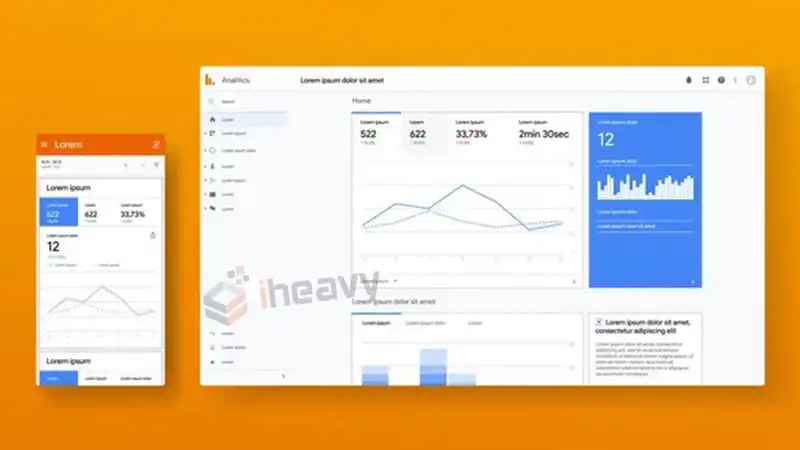Decoding Insights | How Facebook Utilizes Data Analytics to Understand Your Posts
Facebook’s comprehensive use of data analytics includes user profiling, segmentation, and Natural Language Processing for personalized content and targeted advertising. Sentiment analysis, recommender systems, and personalized feeds enhance engagement, while analytics-driven tracking and A/B testing optimize user interaction and interface features.
Ad targeting involves precision targeting and dynamic ad personalization based on user interests. The platform prioritizes user privacy through encryption, anonymization, and user consent. FAQs cover privacy controls, data sharing, and analytics combating misinformation.
Facebook’s commitment to analytics underscores dynamic functionality and continuous optimization for users and advertisers. Let’s analyze as the upcoming sections to uncover what’s more.

User Profiling and Segmentation
Facebook employs data analytics to dissect user profiles, leveraging factors like demographics and online behavior to create detailed user profiles for personalized content delivery and targeted advertising.
Analyzing User Data
Facebook utilizes data analytics to scrutinize user profiles, examining factors such as demographics, interests, and online behavior. This data forms the foundation for creating detailed user profiles, enabling the platform to understand individual preferences and tailor content accordingly.
Segmentation for Targeted Content
Through advanced segmentation techniques, Facebook categorizes users into groups based on shared characteristics. This segmentation allows the platform to deliver personalized content, advertisements, and recommendations, enhancing user experience and engagement.
Natural Language Processing (NLP)
Facebook utilizes data analytics, specifically Natural Language Processing (NLP), to extract meaning and sentiments from user posts, guiding content prioritization based on emotional context.
Understanding Textual Content
Data analytics, particularly Natural Language Processing (NLP), plays a crucial role in comprehending the textual content of user posts. Facebook employs NLP algorithms to extract meaning, sentiments, and contextual information from the language used in posts, comments, and messages.
Sentiment Analysis for Emotional Context
Sentiment analysis, a subset of NLP, helps Facebook discern the emotional context of user posts. This insight allows the platform to gauge user sentiment towards specific topics, products, or experiences, influencing content prioritization and recommendation algorithms.
Content Recommendations and Personalization
In deciphering textual content, Facebook utilizes data analytics, specifically Natural Language Processing (NLP), to extract meaning and sentiments from user posts, enhancing content prioritization based on emotional context.
Recommender Systems
Data analytics powers Facebook’s recommender systems, suggesting relevant content to users based on their past interactions and preferences. These systems leverage machine learning algorithms to predict user preferences, driving higher engagement and content discovery.
Personalized Feeds
The platform employs data analytics to curate personalized feeds for users, showcasing content tailored to their interests. Analyzing user engagement patterns enables Facebook to prioritize posts from friends, pages, and groups that are likely to capture individual attention.
User Engagement Analytics
Facebook utilizes data analytics to track user engagement metrics, such as likes and shares, and employs A/B testing to optimize features, enhancing overall user satisfaction through informed content delivery and interface enhancements.
Tracking Interaction Metrics
Facebook extensively tracks user engagement metrics, including likes, comments, shares, and time spent on posts. Data analytics processes this information to derive insights into the popularity and resonance of different types of content among users.
A/B Testing for Optimization
To enhance user engagement, Facebook conducts A/B testing on various features and content presentation formats. Data analytics evaluates the performance of different versions, helping the platform optimize its interface and content delivery for maximum user satisfaction.
Ad Targeting and Personalized Advertising
Leveraging data analytics, Facebook achieves precision targeting and personalized advertising by tailoring ads to user characteristics, behavior, and real-time personalization, ensuring alignment with individual interests and preferences.
Precision Targeting
Data analytics fuels Facebook’s advertising platform, enabling precise targeting based on user characteristics and behavior. Advertisers leverage this capability to reach specific audience segments, ensuring that ads align with users’ interests and preferences.
Dynamic Ad Personalization
Facebook utilizes data analytics to dynamically personalize advertisements in real-time. This personalization considers factors like user behavior, location, and interests, creating a tailored advertising experience for each user.
Frequently Asked Questions
How does Facebook ensure user privacy while utilizing data analytics?
Facebook adheres to privacy regulations and employs encryption, anonymization, and user consent mechanisms to protect user data. The platform is committed to transparency regarding data usage and provides users with control over their privacy settings.
Can users opt out of data analytics on Facebook?
While users can adjust privacy settings, certain data analytics processes are fundamental to Facebook’s functionality. Users can control the visibility of their posts, limit data sharing with third-party apps, and customize ad preferences.
Does Facebook share user data with third parties for analytics purposes?
Facebook may share aggregated and anonymized data with third parties for analytics and research purposes. However, individual user data is generally protected, and Facebook emphasizes user control over data sharing preferences.
How does Facebook use data analytics to combat misinformation?
Data analytics aids Facebook in identifying patterns associated with misinformation. The platform employs algorithms to detect and limit the spread of false information, working towards a safer and more trustworthy online environment.
Conclusion
Facebook’s utilization of data analytics is integral to its ability to understand and respond to user posts effectively. From user profiling and content recommendations to personalized advertising and combating misinformation, data analytics underpins the platform’s dynamic functionality.






